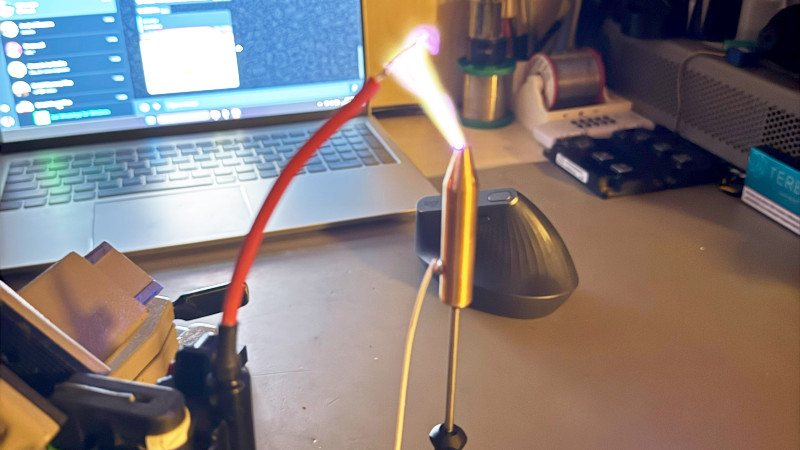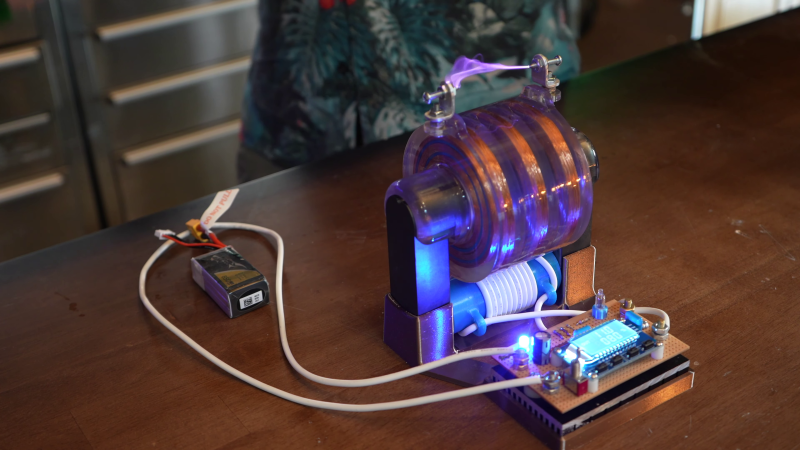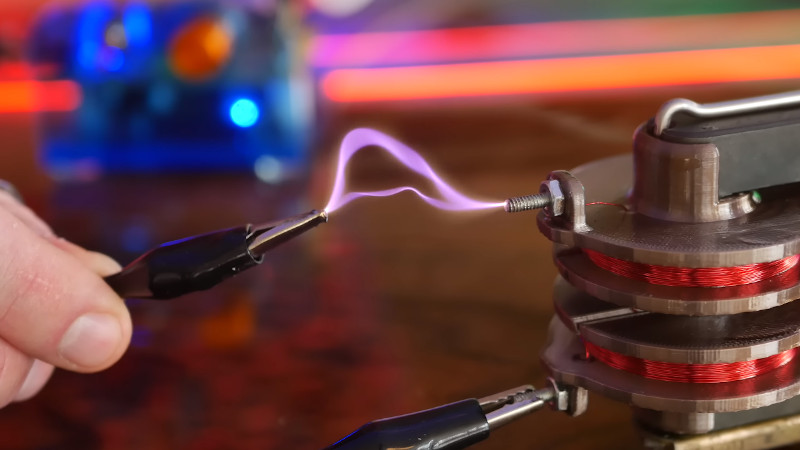Flyback, Done Right

A common part used to create a high voltage is a CRT flyback transformer, having been a ubiquitous junk pile component. So many attempts to use them rely on brute …read more Continue reading Flyback, Done Right
Collaborate Disseminate

A common part used to create a high voltage is a CRT flyback transformer, having been a ubiquitous junk pile component. So many attempts to use them rely on brute …read more Continue reading Flyback, Done Right

For serious high-voltage plasma, you need a serious transformer. [Jay Bowles] from Plasma Channel is taking his projects to the next level, so he built a beefy 6000:1 flyback transformer. …read more Continue reading Pushing the Plasma Limits With a Custom Flyback Transformer

We’ve seen a number of people create plasma speakers over the years here at Hackaday, so at first blush, the latest Plasma Channel video from [Jay Bowles] might seem like …read more Continue reading Playing Music on a Custom Flyback Transformer
If you’re looking to experiment with plasma, you’re going to need a high voltage power supply. Usually that means something big, complex, and (naturally) expensive. But it doesn’t have to be. As [Jay Bowles] demonstrates in his latest Plasma Channel video, you can put together a low-cost power supply capable …read more
Continue reading A Miniature Power Supply For High Voltage Hacking
Using nothing more than an antenna, a spark plug, a flyback transformer, a diode, and a car phone charger, [Kreosan] have implemented the world’s most dangerous cell-phone charger: wirelessly charging their phone from high voltage power lines. This is a demonstration of a hack that we thought was just an urban legend, but it’s probably best to leave this as just a demo — this one is probably illegal and definitely dangerous.
The charger works by holding an old TV aerial fairly close to high voltage overhead cables, and passing the resulting tiny current through a spark plug and a …read more
![]() Continue reading Wirelessly Charge Your Phone From High Voltage Power Lines
Continue reading Wirelessly Charge Your Phone From High Voltage Power Lines